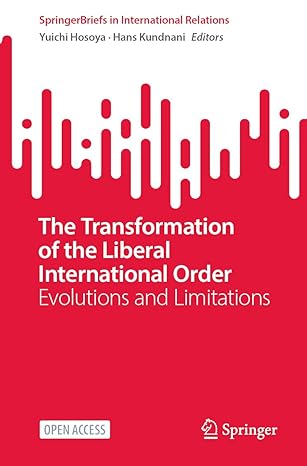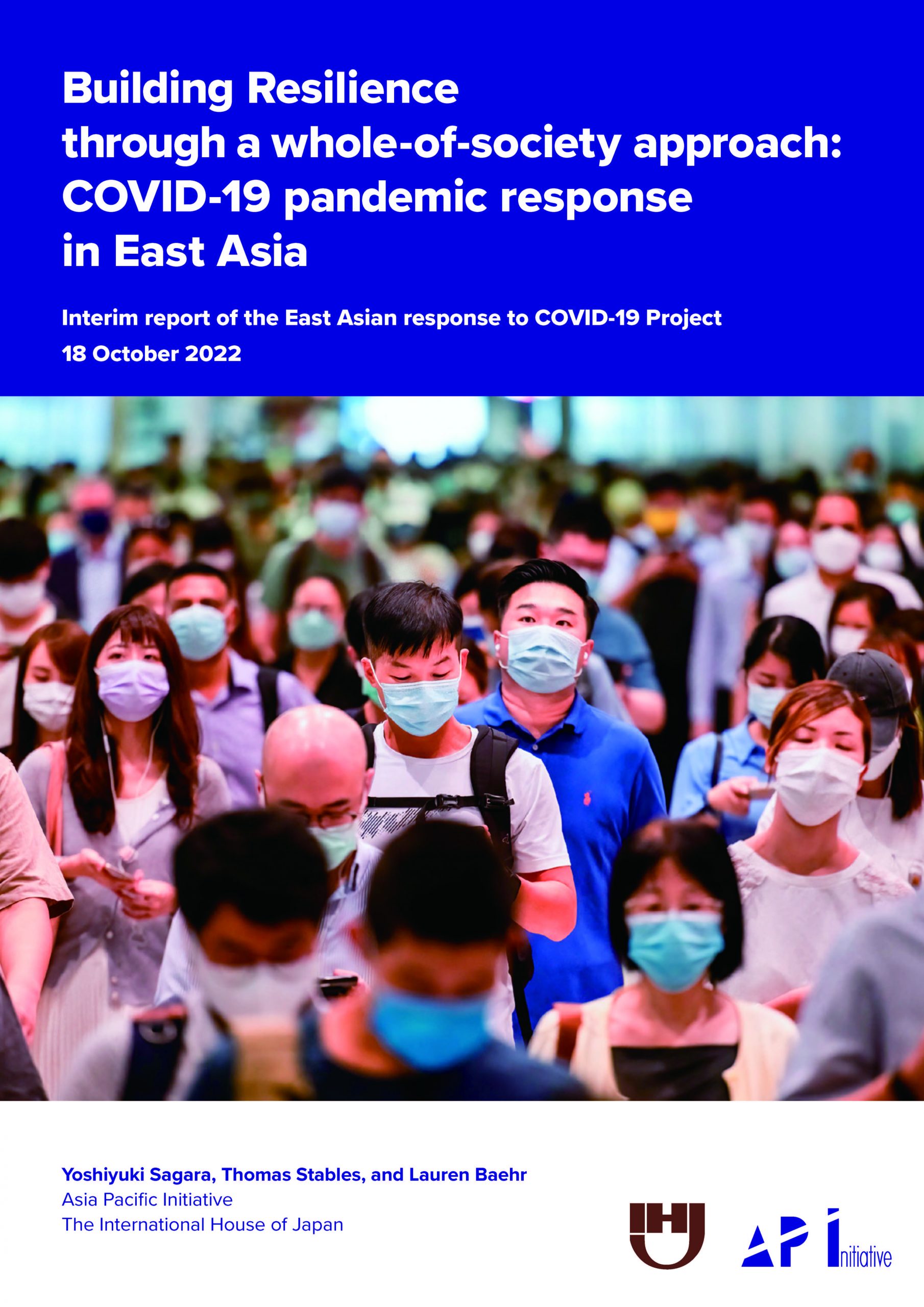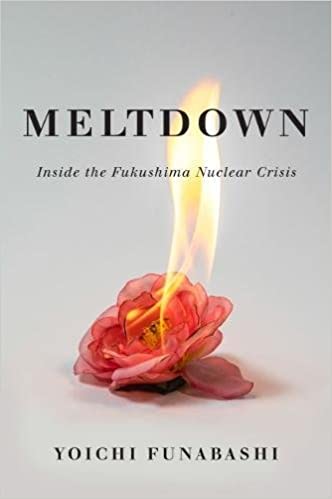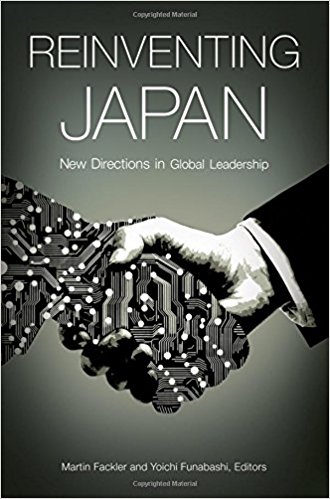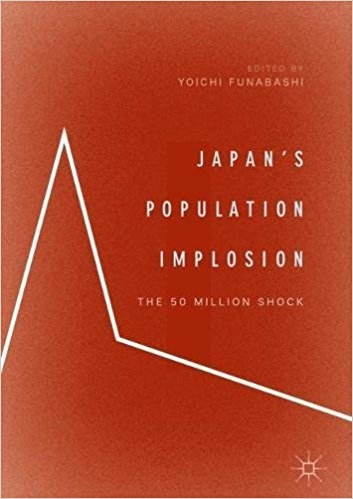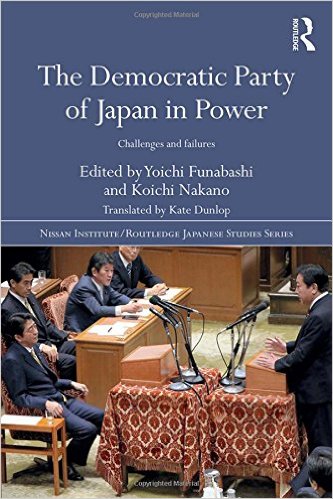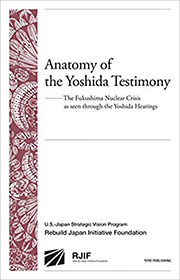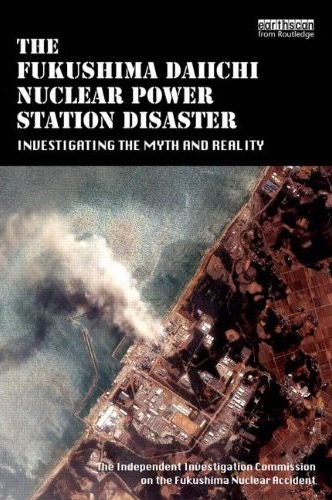『The Transformation of the Liberal International Order』
This open access book aims to emphasize the potential for Japan, Europe and Indo-Pacific countries including the US to respond to shared domestic and international challenges on finding joint ways to uphold and develop the liberal international order (LIO) in the Asian Pacific region and the world. It explores how these countries and the region (the EU) can work together to promote solidarity and cooperation to advance democratic standards and rules-based norms globally.
The US understands the LIO in a political sense and centers its focus on democracy, aiming to build a coalition of democracies opposed to China and Russia which represent a kind of authoritarian axis. The US aims both to defend the LIO and respond to the China challenge and to build a coalition of countries that will do both. In contrast European countries aim at defending the “rules-based order”―a term preferred because they fear that the concept of the LIO might alienate or antagonize non-democratic countries. They face a dilemma between working with China to reform the LIO or, in seeking to defend it from China, excluding China. Germany and France differ regarding whether to play a passive or active role in the Indo-Pacific, the former choosing to preserve peace and stability for continued exports, and, until recently, doing little to contribute to security. Its views echo those of the ASEAN countries, which are unable or unwilling to take an active role in protecting the LIO. On the contrary France, along with the UK, actively carries out presence operations in the Indo-Pacific. Rather than upholding US dominance, France supports a multipolar order that will also reduce China’s influence in the region, with France acting as a balancing power and offering an alternative to the choice between China and the United States. Japan and India show interest in European views with the former leaning more toward its allies, the US and AUKUS, and the latter seeing Europe less as an alternative to the status quo and more as a complement of QUAD. This book concludes that the US needs to build coalitions rather than forcing allies and neighbors to choose sides, while Japan, Asian countries, and Europeans should more actively reform the LIO.
Editors: Hans Kundnani, Yuichi Hosoya
Publisher:Springer
Publication Date: Oct 25, 2023
American Strategy and the Liberal International Order
East Asia, Europe and the High Sea: The Geostrategic Trinity of the U.S.-Led Order
The EU’s Connectivity Strategy 2.0: Global Gateway in the Indo-Pacific
Germany’s Indo-Pacific Turn: Towards a Contribution to the Rules-Based Order?
France’s Indo-Pacific Approach: Salvaging the Rules-Based Order and Staying Relevant
India, the Quad, and the Liberal International Order
Countering Chinese Economic Coercion and Corrosive Capital in Southeast Asia
The Challenge of China for the Liberal International Order
Northeast Asia’s Energy Transition–Challenges for a Rules-Based Security and Economic Order
The Liberal International Order and Economic Security
The Future of the Liberal International Order
Critical Review of the Abe Administration: Politics of Conservatism and Realism
The second Abe administration, which lasted for seven years and eight months, turned out to be the longest administration in Japan’s constitutional history. What factors contributed to its remarkable longevity? What accomplishments and enduring legacies did this administration achieve during its tenure?
Originally published in Bungeishunju in Japanese, this book examines policies pursued by the administration and its governance based on over 50 investigative interviews with key figures in the administration, including former Prime Minister Shinzo Abe. The contributors cover nine major policies, including economic policy, diplomacy and security, work style reform, trade liberalization, and historical issues, and explore why a specific policy was chosen at that time, who made that decision, and on what grounds. Reviewing such decision-making processes sheds light on the issue of governance. Consequently, this book also analyses the administration’s distinctive style of governance, such as strong leadership from the Prime Minister’s Office, ability to navigate party politics, and overwhelming victories in national elections.
An essential for scholars and students in the fields of public administration, public policy, Japanese studies, and Asian Studies.
Editors: Yoichi Funabashi and Koji Nakakita
Publication date: December 12, 2023
Introduction
What made Abe’s long and stable administration possible?
Chapter 1
Abenomics: Putting the Finance Ministry and the Bank of Japan under the Prime Minister’s control
Chapter 2
Elections and public relations campaigns: Winning over the younger generation in a “silent revolution”
Chapter 3
The Prime Minister’s Office in charge: The conditions that enabled strong and stable leadership
Chapter 4
Foreign and security policy: The pursuit of strategy
Chapter 5
Politics on TPP and CPTPP: Turning Japan into one of the world’s major free trade powers
Chapter 6
History issues: A consistently realist approach
Chapter 7
Governance of the ruling parties: The pervasive control of the prime minister
Chapter 8
Skillful agenda-setting for women’s policy
Chapter 9
Constitutional revision—Why it failed
Building Resilience through a whole-of-society approach: COVID-19 pandemic responses in East Asia
The COVID-19 pandemic is the most devastating global health crisis in over a century. During the crisis, East Asian countries and regions, excluding China, were able to provide effective operational knowledge to the public, reduce core national vulnerabilities, and adjust healthcare capacity and resources in ways that created public trust and a sense of legitimacy in the competency of the governments’ strategies. This created and maintained a whole-of-society response, which allowed East Asia to build resilience and effectively control the COVID-19 pandemic. Such responses bought these governments time by keeping infections relatively low until vaccines were available.
Authors: Yoshiyuki Sagara, Thomas Stables, and Lauren Baehr
Publisher: Routledge
Publication date: October 18, 2022
Introduction
Response framework
China, Europe, and the United States: spread of lockdowns and lack of public trust
East Asia’s resilient whole-of-society approach: activating a comprehensive response
Providing operational knowledge
Reducing vulnerability
Adjusting healthcare capacity & resources
Conclusion
10-year Investigation Commission on the Fukushima Nuclear Accident: Final Report by Investigation Commission on the Fukushima Nuclear Accident
Asia Pacific Initiative’s “10-year Investigation Commission on the Fukushima Nuclear Accident: Final Report” reviewed the lessons learned in the decade after the 2011 Fukushima Nuclear Disaster.
From summer 2019 to spring 2020, the investigation commission, led by project chair Professor SUZUKI Kazuto, conducted a number of interviews with relevant experts and practitioners. The report examined the ten years after the Fukushima nuclear accident from seven perspectives: the government’s nuclear safety policy, governance of power companies, communications and risk management, crisis management of the Cabinet secretariate office, logistics management in disasters, first-responders, and reconstruction efforts. Inheriting the philosophy of the 2012 Independent Investigation Commission on the Fukushima Nuclear Accident, leading experts and practitioners in each field co-authored this report to reveal what the Japanese government and society have learned (or have failed to learn) in the last 10 years since the Fukushima nuclear accident.
Author: Asia Pacific Initiative
Publication date: April 1, 2022
Introduction
Issues for the Second Private Accident InvestigationIndependent Accident Investigation: Do not brook the “normal pattern”
Chapter 1
Safety Regulations: An Approach to Uncertainty
Chapter 2
TEPCO’s Politics
Chapter 3
Risk Communication for Radiation Hazards
Chapter 4
The crisis management system in the Kantei
Chapter 5
The Logistics of Responding to a Nuclear Emergency
Chapter 6
First Responders and U.S. Military Support Responders
Chapter 7
Disaster Recovery Frontier
Concluding Chapter
Creating the “shape of this country”
The Independent Investigation Commission on the Japanese Government’s Response to COVID-19: Report on Best Practices and Lessons Learned
On October 8, 2021, the Asia Pacific Initiative (API), an independent global think tank, published The Independent Investigation Commission on the Japanese Government’s Response to COVID-19 (API/ICJC): Report on Best Practices and Lessons Learned with Discover 21, Inc. on Amazon Kindle.
In April 2020, the Japanese government issued its first state of emergency over the COVID-19 pandemic. When the then Prime Minister Shinzo Abe lifted it the next month, Abe attributed Japan’s success in keeping infections and deaths lower than in other major industrialized countries to what he called the “Japan model” of dealing with the crisis. The “Japan model,” however, can properly be declared a model only if its efforts to bring infections under control work in tandem with its efforts to stabilize the economy. In consideration of this, during the first half of 2020, what were the effects of Japan’s countermeasures? Which policies did not work? What remains uncertain?
To review Japan’s preparedness and response to the COVID-19 pandemic, API launched the “Independent Investigation Commission on the Japanese Government’s Response to COVID-19.”
API originally published the Japanese-language version and submitted it to Prime Minister Yoshihide Suga on October 8, 2020. The commission conducted 102 interviews with 84 government officials and experts, including PM Abe; PM Suga, who was chief cabinet secretary prior to becoming prime minister; Katsunobu Kato, who was health minister prior to becoming chief cabinet secretary; as well as numerous other senior government officials who provided insight on the background of the events.
Author: Asia Pacific Initiative
Publisher: Discover 21, Inc
Publication date: October 8, 2021
ASIN: B09HQVKDFN
Message from program director Yoichi Funabashi
Messages by members of the API/ICJC
Part I: What is the Japan model?
Chapter 1 Epidemiological assessment of Japan’s response to the novel coronavirus disease and Japanese peoples behavioral change compared to other countries around the world
Chapter 2 Balancing lives and livelihood: the challenge of trade-offs
Part II: The Japanese governments response to COVID-19
Chapter 1 The Diamond Princess
Chapter 2 Rescue of Japanese nationals from Wuhan and strengthening border measures
Chapter 3 Participation of experts and initial behavioral change policies (The Three Cs and nationwide school closure)
Chapter 4 State of emergency and soft lockdown
Chapter 5 Lifting the state of emergency
Chapter 6 Economic measures
Chapter 7 PCR and other tests
Chapter 8 Medicines and vaccines
Chapter 9 Border control (Resumption of international travel)
Part III: Best practices and challenges
Chapter 1 Preparedness against a pandemic crisis
Chapter 2 Prime Minister’s Office
Chapter 3 The Health, Labor and Welfare Ministry (MHLW)
Chapter 4 Medical and nursing care system
Chapter 5 The Expert Meeting on the Novel Coronavirus Disease Control
Chapter 6 Crisis communication
Chapter 7 National and local governments
Chapter 8 Policy implementation power
Chapter 9 Global health diplomacy
Part IV:
Conclusion and Recommendations
Was the Japan model successful?-A responsibility to learn how to learn
Special interview
Yasutoshi Nishimura, minister in charge of the response to COVID-19 (Economy revitalization minister)
Shigeru Omi, president of the Japan Community Health Care Organization (Deputy chair of the Expert Meeting on the Novel Coronavirus Disease Control, chairman of the Subcommittee on Novel Coronavirus Disease Control)
Yuriko Koike, governor of Tokyo
Meltdown: Inside the Fukushima Nuclear Crisis
Meltdown: Inside the Fukushima Nuclear Crisis was published by Brookings Institution Press on March 2, 2021. Providing an unrivaled chronological account of the human struggle to contain man-made technology that was overwhelmed by nature, this book aims to give insights into why Japan’s decision-making process within the first two weeks failed almost as dramatically as had the Fukushima nuclear reactors, which went into meltdown following a major tsunami.
Based on interviews with more than 300 government officials, power plant operators, and military personnel during the years since the disaster, Meltdown is a meticulous recounting and analysis of the human stories behind the response to the Fukushima disaster. It attempts to draw lessons on leadership, governance, disaster resilience, and crisis management―lessons that have universal application and pertinence for an increasingly technology-driven and interconnected global society.
Author: FUNABASHI Yoichi
Publisher: Brookings Institution Press
First Published: March 2, 2021
Price: $39.99
ISBN-10: 0815732597
ISBN-13: 978-0815732594
The Crisis of Liberal Internationalism: Japan and the World Order
The Crisis of Liberal Internationalism: Japan and the World Order was published by Brookings Institution Press on February 4, 2020. The book has been released as part of Asia Pacific Initiative’s Liberal International Order project, which has examined how Japan may protect the liberal international order and what obstacles it may confront in such efforts. The publication of the volume marks a significant step in carrying out one of our institution’s primary missions, which is to uphold liberalism domestically and overseas.
The volume is divided into two major parts, exploring foreign policy and statecraft. Japan’s role on the international stage is examined through topics such as trade and international organizations. Meanwhile, the book looks at issues within Japan, such as populism and journalism, in its second half.
Contributions from a number of scholars and experts on a wide range of subjects have resulted in a volume relevant for policymakers and the general public alike.
The book was co-edited by API Chairman Yoichi Funabashi and G. John Ikenberry1/.
1/G. John Ikenberry is the Albert G. Milbank Professor of Politics and International Affairs in the Department of Politics and Woodrow Wilson School of Public and International Affairs at Princeton University. He is also a Global Eminence Scholar at Kyung Hee University in Korea.
Edited by Yoichi Funabashi and G. John Ikenberry
Publisher: Brookings Institution Press
First Published: February 4, 2020
ISBN(Paperback): 9780815737674
ISBN(E-book): 9780815737681
The Article II Mandate:
Forging a Stronger Economic Alliance between the United States and Japan
This is the report of the joint research project with the Center for Strategic and International Studies (CSIS), a Washington-based think tank, to deepen geo-economic policy cooperation between the United States and Japan in third countries.
This report examined four country case studies (Myanmar, Vietnam, India and South Korea) and two functional case studies (G7 and regional trade architecture), and put forward a number of overarching policy recommendations.
Edited by AP Initiative and CSIS
Publisher: CSIS
First Published: November 29, 2018
ISBN: 978-1-4422-8095-3
Executive Summary
Introduction and Overview
Case Study #1 / Myanmar
Case Study #2 / Vietnam
Case Study #3 / India
Case Study #4 / South Korea
Case Study #5 / Regional Trade Architecture
Case Study #6 / The Group of Seven
About the Project Directors and Editiors
Reinventing Japan: New Directions in Global Leadership
This is the English companion volume to “Galapagos Cool,” which was published in Japanese by Toyo Keizai, Inc. in 2017. Both books were the product of an almost two-year project, entitled “Why Japan Matters,” which looked at how Japan could contribute more to the world, and take a bigger leadership role in the liberal international order.
Written for overseas audiences, “Reinventing Japan” examines how Japan has quietly reinvented itself from a catch-up economy into a global leader in innovation and creativity, one whose soft power is now recognized as extending from postmodern architecture to pluripotent stem cells. The book takes a fresh look at the so-called Galapagos phenomenon, in which Japan has evolved a distinctive economic and technological ecosystem, and argues that this difference can actually be a source of strength by offering unique products, ideas and solutions to the rest of the world.
Written by a dozen experts in their fields, this book describes Japan’s actual and potential contributions to the world in fields ranging from fashion and pop culture to development aid and historical reconciliation. The authors argue that, as a front-runner in problems ranging from demographic aging to chronic deflation, Japan is actually a leader in finding solutions to the social and economic challenges now facing the entire developed world. The authors seek to demonstrate that, in an era of rising doubts about the future of American leadership, the time has come for Japan to step into a new role as a purveyor of models and values better suited to today’s multipolar and diverse world.
Edited by Martin Fackler and Yoichi Funabashi
Publisher: Praeger
First Published: March 31, 2018
ISBN-10: 1440862869
ISBN-13: 978-1440862861
Praeger *Available as e-book and Hardcover
Introduction: What Can Japan Offer the World?
Part One Galapagos Incubator
1. A Soft Superpower: The Pivot from Manufacturing to Pop Culture
2. Dominating the Pritzkers: Japan’s Emergence as a Leader in Design
3. Asia’s Rediscovery of Japan: The Boom in Inbound Tourism
Part Two Outliers and Pioneers
4. Departing from Silicon Valley: Japan’s New Startup Ecosystem
5. A Nation of Centenarians: Japan’s Revolution in Health and Wellness
6. Pursuing Nobels: Japan’s Emergence as a Global Leader in Science
7. Deciphering Japan: China’s Fascination with Its Neighbor
Part Three Global Contributor
8. Lessons of Tohoku: The Sources of Japan’s Resilience to Disaster
9. Bridges Make Good Neighbors: Building Soft Power with ODA
10. Japan’s Strategic Position: Global Civilian Power 2.0
11. Obama in Hiroshima: A Model for Historical Reconciliation?
Conclusion: Japan’s Frontiers Are Global Frontiers
Japan’s Population Implosion: The 50 Million Shock (RJIF)
This book examines Japan’s population issue, exploring how declining demographic trends are affecting Japan’s social structure, specifically in the context of Greater Tokyo, life infrastructure, public finance and the economy. Considering the past Japanese policies from the perspective of population, national land, and politics, it argues that the inability of past administrations to develop a long-term and comprehensive policy has exacerbated the population crisis. Based on the study of policy failures, this book makes recommendations for effective population policy – covering both ‘mitigation’ measures to encourage a recovery in the depopulation process as well as ‘adaptation’ measures to maintain living standards.
Edited by Yoichi Funabashi, Chairman, AP Initiative
Publisher: Palgrave Macmillan
First Published: December 30, 2017
ISBN-10: 9811049823
ISBN-13: 978-9811049828
Palgrave Macmillan *Available as e-book and individual chapters
1. Introduction
2. The Greater Tokyo Shock
3. A Collapse in Regional Infrastructure
4. The Impact of Demographic Changes on Macroeconomic and Public Finance
5. Demographic Policy
6. National Land (Regional/Administrative) Policy
7. The Demographic Issue and Silver Democracy
8. Population Growth Policy and Public Finance
9. Optimum Population/Land Relocation: Area Management—Crisis Management
10. Countering Falling Regional Population with Business
11. Policy Proposals
The Democratic Party of Japan in Power: Challenges and Failures (RJIF)
This project examines the DPJ administration from September 2009 to December 2012, from various perspectives such as policies, party governance, and management and legacy. Its ultimate goal is to identify the significance of the DPJ in Japan’s party politics and the reasons for its downfall, as well as to derive necessary lessons for Japan’s future party democracy.
Edited by Yoichi Funabashi, Chairman, RJIF and Koichi Nakano, Professor, Sophia University,
Publisher: Routledge (Nissan Institute/Routledge Japanese Studies)
First Published: September 8, 2016
ISBN-10: 1138638706
ISBN-13: 978-1138638709
Foreword
Preface: The Democratic Party of Japan in Power by Arthur Stockwin and Roger Goodham
Preface to the English edition
Introduction: the DPJ’s evolution and three years in power
1. The Manifesto: why was the DPJ Unable to keep its campaign promises?
2. Political leadership: the failure of the DPJ’s “Five Measures”
3. The economy and public finance: the challenges and setbacks of reform
4. Foreign and security policy under the DPJ: from idealism to pragmatism
5. The child allowance: a failed attempt to put “children first”
6. The DPJ’s mismanagement of government and party: was Ozawa alone to blame?
7. DPJ election strategy: the dilemma of landslide victory
Conclusion: a message to the DPJ: be the party of reform. Improve your ability to govern.
Afterword
A timeline of major events in the history of the DPJ
List of DPJ members interviewed
List of survey respondents
The result of the survey of DPJ Diet members
Anatomy of the Yoshida Testimony
– The Fukushima Nuclear Crisis as seen through the Yoshida Hearings (RJIF)
Several members of working group of the Independent Investigation Commission on the Fukushima Nuclear Accident examined whether Japan has learned the lessons from Fukushima since the accident through the analysis of the hearing records from the late Mr. Masao Yoshida, former Site Superintendent of the TEPCO Fukushima Daiichi Nuclear Power Station, which was released in September 2014 (so-called “Yoshida Testimony”). Based on the report by the Independent Investigation Commission, this project analyzes the testimony closely from several points of view, such as Incident Command System (ICS), operation, governance of crisis management, leadership on crisis, safety and security, and ways to learn lessons.
Author: Rebuild Japan Initiative Foundation
Publisher: TOYO PUBLISHING
First Published: August 28, 2015
ISBN-10: 4809678016
ISBN-13: 978-4809678011
Foreword: From Investigating the Accident to Investigating the Crisis
Part 1: A Reading of the Yoshida Hearings
Yoichi FUNABASHI
Part 2: Three Years on from Publishing The Independent Investigation Report
(An analysis and investigation three years after the event by four members of the then Working Committee)
Kenta HORIO
Akihisa SHIOZAKI
Kazuto SUZUKI
Shin-etsu SUGAWARA
Afterword: Chronology of the Fukushima Nuclear Accident
Examining Japan’s Lost Decades (RJIF)
What specifically did Japan lose during the so-called “lost decades,” which began with the bursting of the bubble in 1989? Why and how did Japan’s policies fail? Were there alternatives and why didn’t they ripen into practical plans? How should Japanese policymakers have reacted – have they made any significant efforts to revitalize Japan or have they just accepted a gentle national decline? Such questions are tackled head on in Examining Japan’s Lost Decades (Routledge Contemporary Series), which provides insights critical not only to the future of Japan but sheds light on how Europe, the US and Asian countries can deal with common challenges, including demographic shifts, fiscal deficit, free trade and international security.
Edited by Yoichi Funabashi, Chairman, RJIF and Barak Kushner, University of Cambridge, Reader, the Faculty of Asian and Middle Eastern Studies
Publisher: Routledge Contemporary Japan Series
First Published: April 20, 2015
ISBN: 978-1138885752
1. Japan’s Demographic Collapse and Vanishing Provinces
2. Monetary and Fiscal Policies (Japan’s fiscal policy failure)
3. The Two “Lost Decades” and Macroeconomics: Changing Economic Policies)
4. The Curse of “Japan, Inc.” and Japan’s Microeconomic Competitiveness
5. Making Sense of the Lost Decades: Workplaces and Schools, Men and Women, Young and Old, Rich and Poor
6. The Two Lost Decades in Education: The Failure of Reform
7. The Fukushima Nuclear Accident: Lost Opportunities and the “Safety Myth”
8. The Last Two Decades in Japanese Politics: Lost Opportunities and Undesirable Outcomes
II. THE GLOBAL SPHERE: DIPLOMACY AND NATIONAL SECURITY POLICY
9. The Gulf War and Japan’s National Security Identity
10. Foreign Economic Policy Strategies and Economic Performance
11. Japan’s Asia / Asia-Pacific Policy in Flux
12. Okinawa Bases and the U.S. – Japan Alliance
13. Japanese Historical Memory
14. Japan’s Failed Bid for a Permanent Seat on the UN Security Council
15. The Stakeholder State: Ideology and Values in Japan’s Search for a Post-Cold War Global Role
일본 최악의 시나리오 9개의 사각지대
(Japan in Peril? 9 crisis scenarios) (RJIF)

Author: 일본 재건 이니셔티브(Rebuild Japan Initiative Foundation)
Publisher: NANAM Publishing House
First Published: February 26, 2015
Language: Korean
ISBN: 978-89-300-8746-9
Preface
Part 1: Disaster Scenarios
1. Island dispute: Confrontation over Senkaku
2. Financial meltdown: Japan suffers boiling-frog syndrome
3. Tokyo quake: Collapse of amazon.com society
4. Cyberterrorism: Urban infrastructure under attack
5. Pandemic: The day the doctors disappeared
6. Energy crisis: Strait of Hormuz blocked
7. Collapse of North Korea: Japan’s non-nuclear principles waver
8. Nuclear terrorism: Did we learn anything from 3/11?
9. Shrinking population: Japan’s youth turn into terrorists
Part2: What the Scenarios Tell Us
10. Legal framework
11. Coordination between state and private sector for managing risks
12. Cross-border strategies
13. Role of the Prime Minister’s office
14. Communication
Quiet Deterrence: Building Japan’s New National Security Strategy (RJIF)
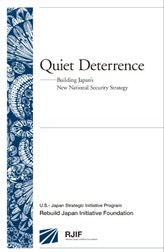
Designed as an alternative to the National Security Strategy that the Japanese government endorsed in 2013, this book recommends Japan to strengthen its stance of “quiet deterrence” and emphasizes the need to strike a new and balanced strategy amid the turbulence of 21st century geopolitics.
Author: U.S.-Japan Strategic Vision Program
Rebuild Japan Initiative Foundation
Publisher: Rebuild Japan Initiative Foundation
First Published: July, 2014
Preface
Foreword and Assessment Kurt M. Campbell and Michael J. Green
Introduction
Chapter 1: Japan in the New Strategic Environment
Chapter 2: Strategizing Japan’s National Interest
Security Dimension
Economical Dimension
Normative Dimension
Chapter 3: Advancing Japan’s Security Strategy
National Defense Policy
Japan-U.S. Alliance
Alliance Plus-One, Alliance Plus-Sum and Regional Cooperation
Global Engagement
Chapter 4: Strategy in Action
Japan in Peril? 9 crisis scenarios (RJIF)
We initiated the “Crisis Management Project” in May 2012 after discovering the vulnerabilities of Japan’s system for dealing with crises through RJIF’s inaugural project, “The Independent Investigation Commission on the Fukushima Nuclear Accident”. This initiative sketched out nine worst-case crisis scenarios that could be trigged by an “unexpected” incident and that can easily escalate (e.g. natural disasters, terrorism, or military clashes) and evaluated the current crisis management system and its outstanding issues.
Author: Rebuild Japan Initiative Foundation
Publisher: CLSA
Paperback: 199 pages
First Published: February 20, 2014
ISBN: 978-988-98942-6-9
The Fukushima Daiichi Nuclear Power Station Disaster: Investigating the Myth and Reality (RJIF)
The Fukushima Daiichi Nuclear Power Station Disaster is an independent analysis of the causes of the second worst nuclear accident in history, and TEPCO’s failure to contain damage. Written from a civilian perspective, the book is the result of an independent commission established by RJIF in 2011 that conducted over 300 investigative interviews to collect testimonies from relevant individuals at the forefront of the disaster, including incumbent ministers and top government officials.
Author: The Independent Investigation Commission on the Fukushima Nuclear Accident
Publisher: Routledge
Paperback: 298 pages
First Published: February 20, 2014
ISBN: 978-0415713962
Foreword by Kennette Benedict
Prologue
1. A Fukushima Diary, March 11-16, 2011
2. Nuclear Energy Development in Japan
3. The Safety Myth
4. Actors in Japanese Nuclear Safety Governance
5. International Safety
6. Accident Preparedness and Operation
7. Impact of Radioactive Material Released into the Environment
8. Communicating the Fukushima Disaster
9. US-Japan Relationship
10. Lessons of the Fukushima Daiichi Nuclear Power Station Accident and the Quest for Resilience
Epilogue
 APIニュースレター 登録
APIニュースレター 登録